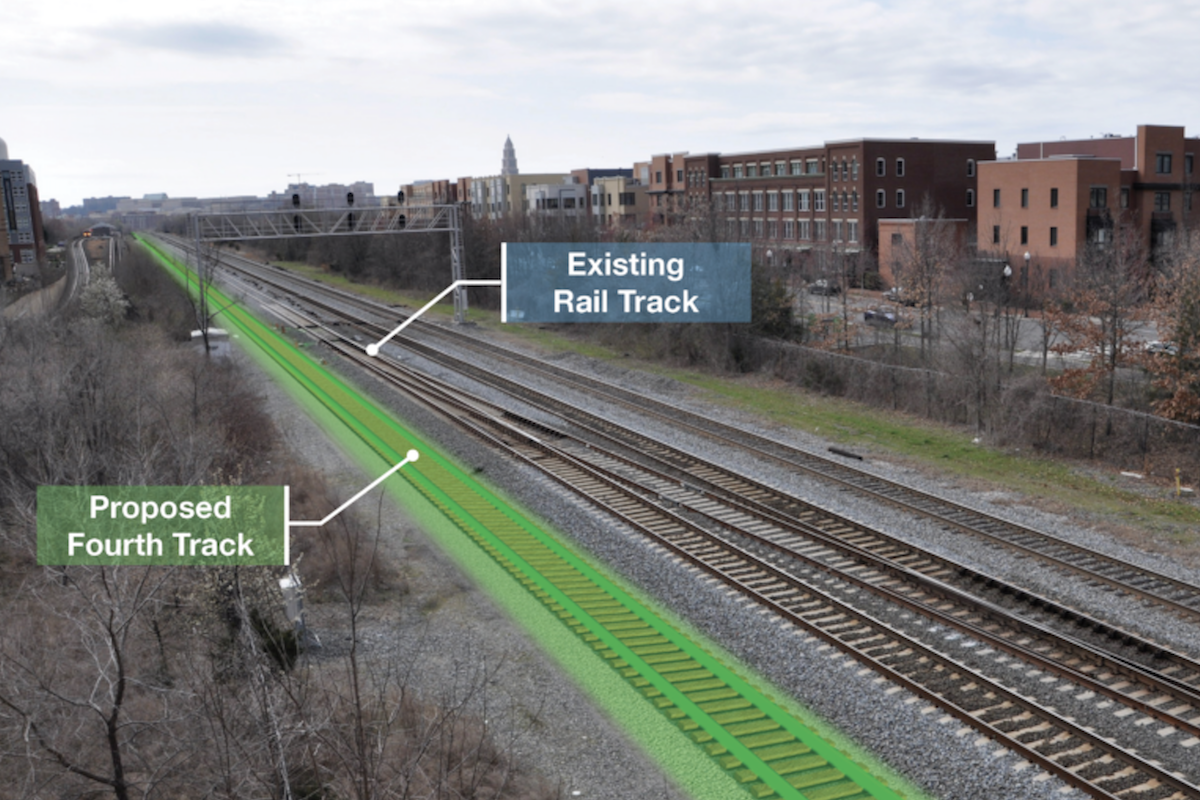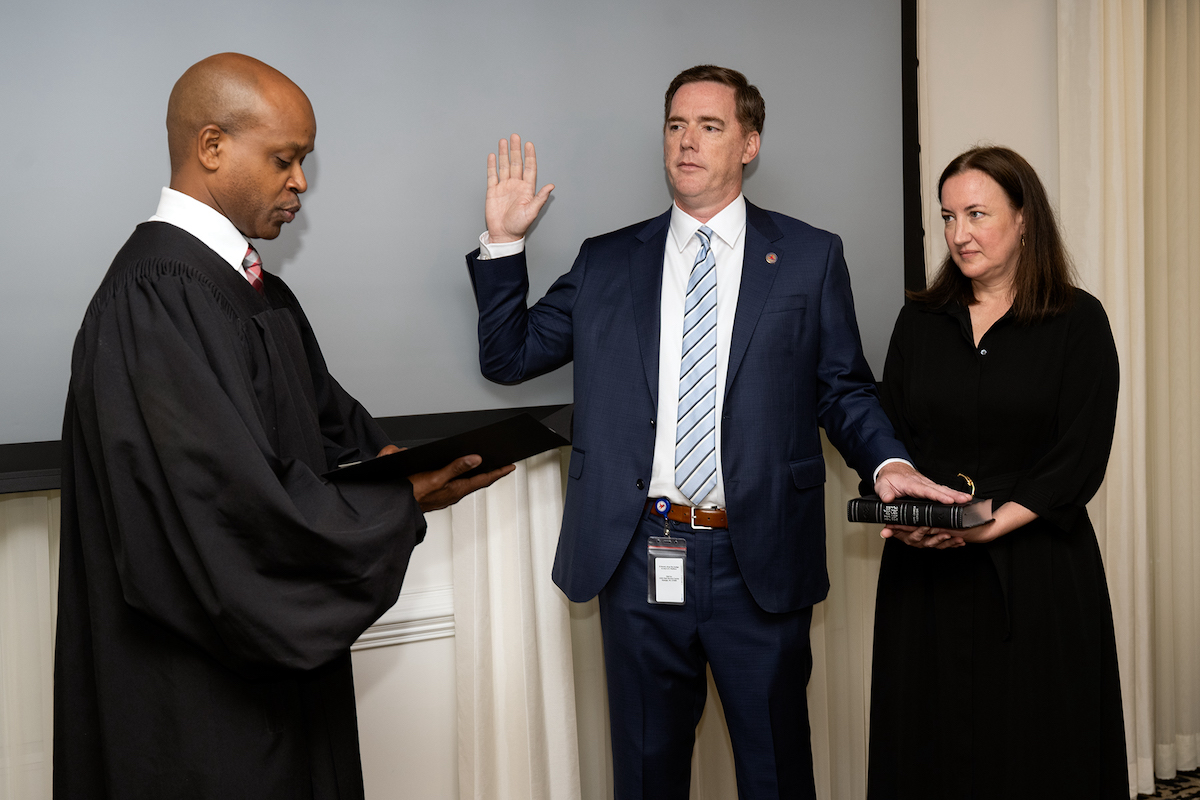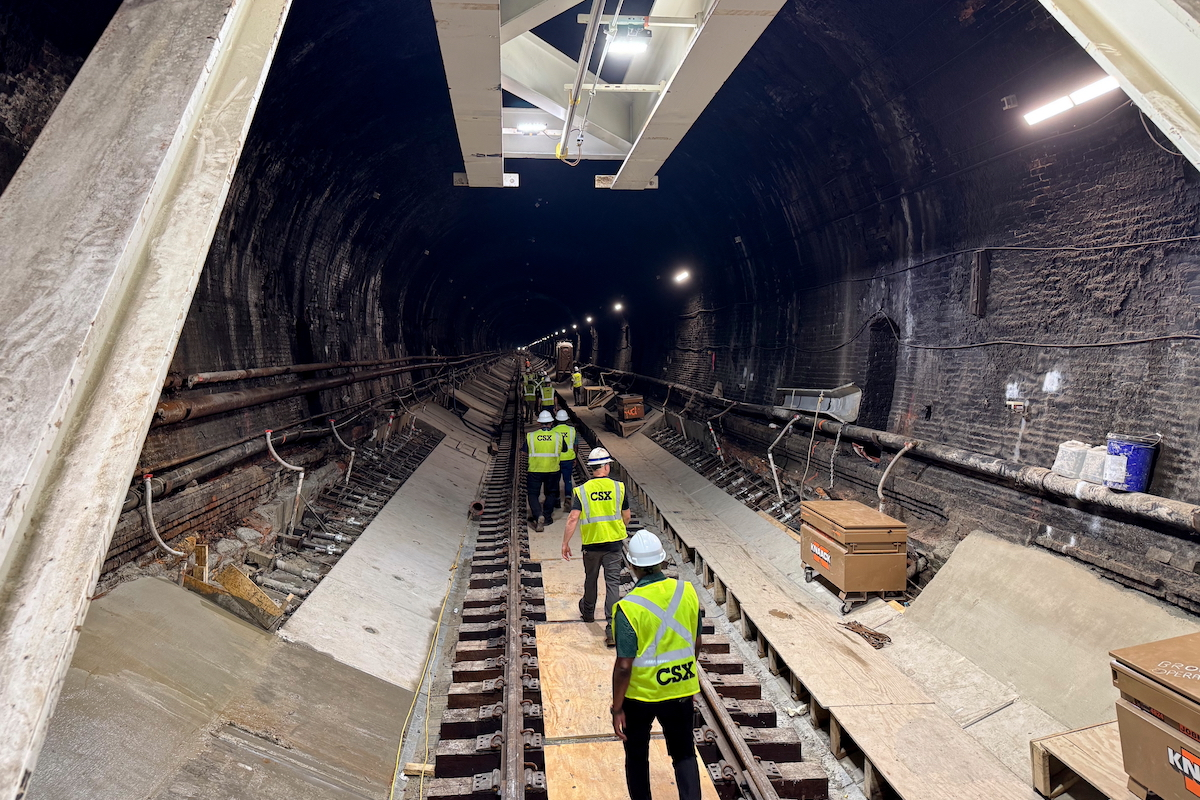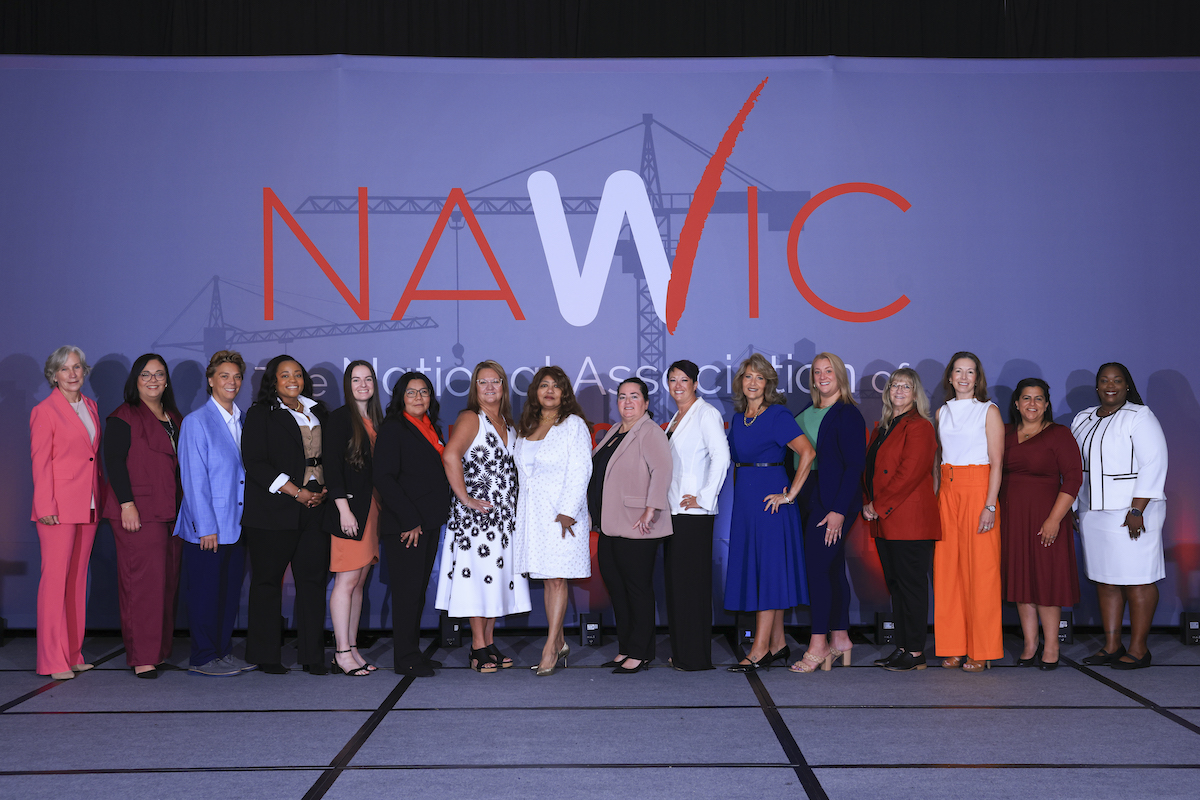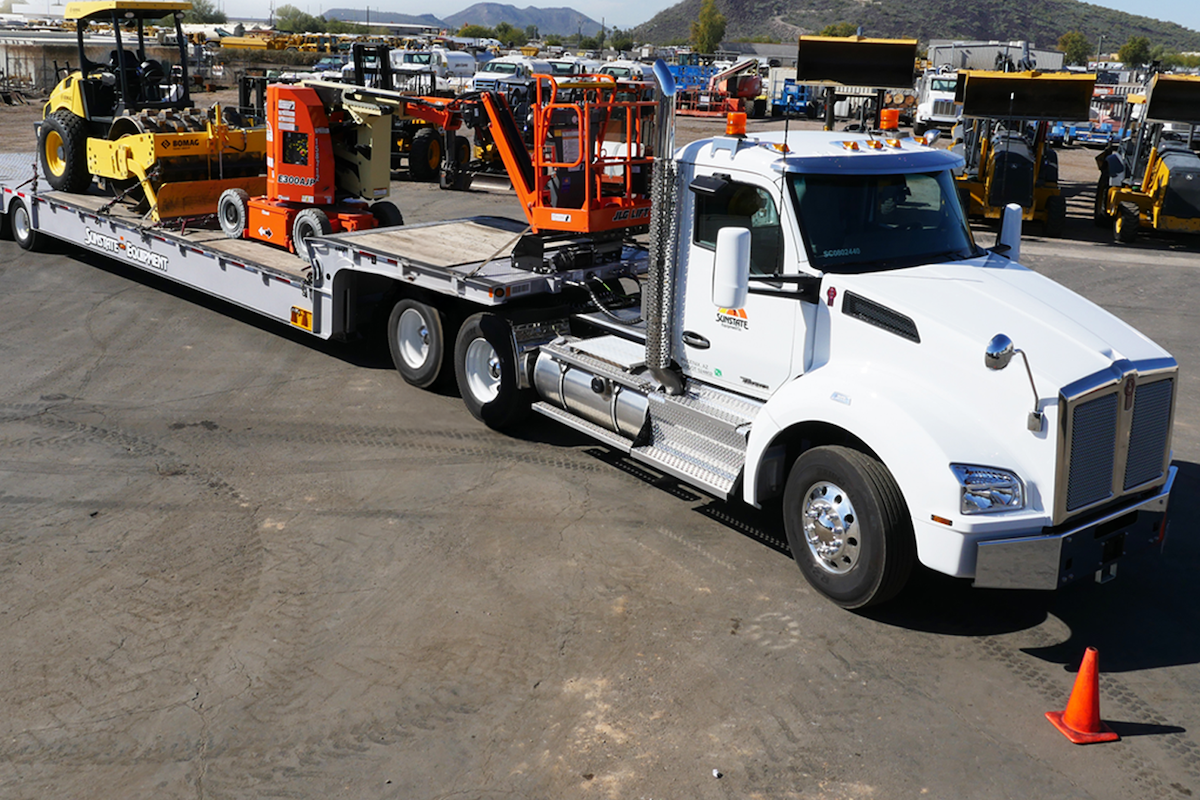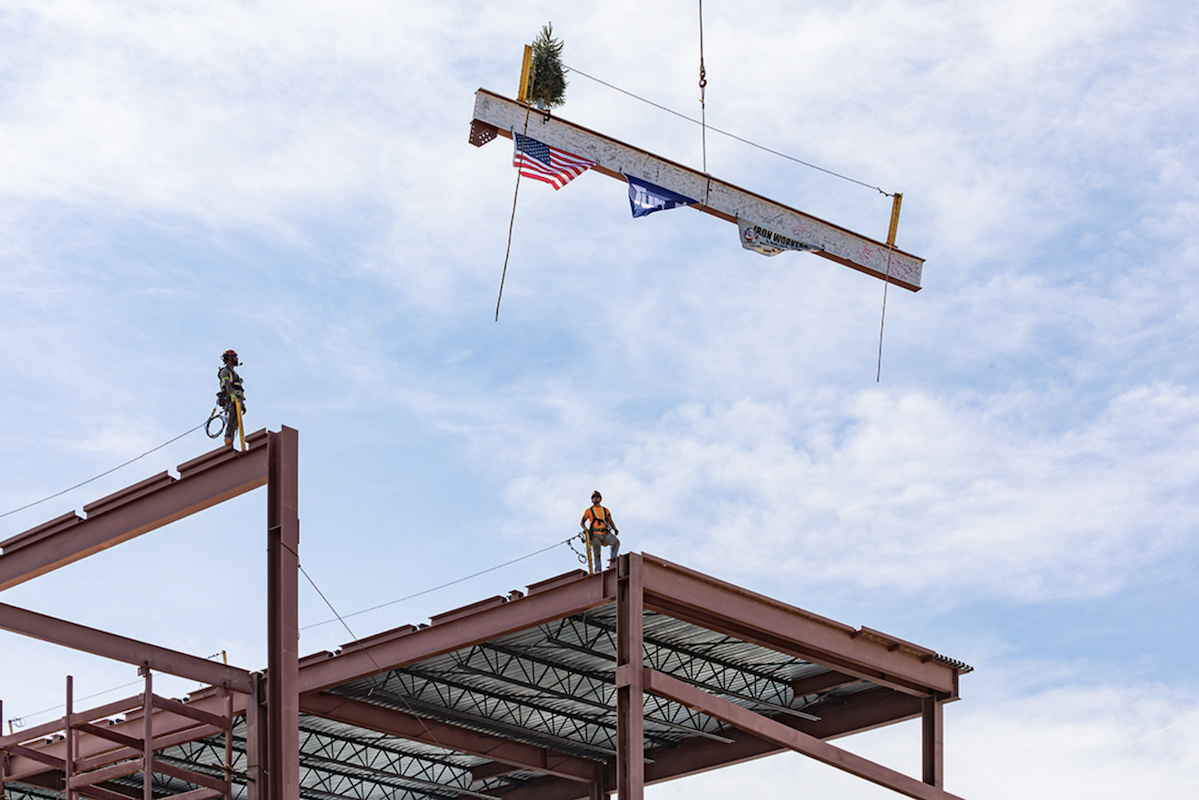Only the fourth bored roadway tunnel project in the U.S., the HRBT Expansion will use a 4,000-ton, 46-feet-high Tunnel Boring Machine (TBM), as well as hundreds of workers. In spring 2021, over 450 personnel were already working on the project. During the peak of construction – expected to start in 2022 and last up to two years – as many as 1,200 trade personnel will work simultaneously.
Currently, two immersed tube tunnels each carry two lanes of traffic under the federal channel of the Hampton Roads Harbor. The tunnels begin and end at artificial islands, with marine trestle bridges making connections to the north and south shores.
To increase capacity, improve travel time reliability, and support emergency evacuation readiness, the HRBT Expansion project will add twin, two-lane, bored tunnels. Once completed, the new tunnels will accommodate eastbound traffic while the existing tunnels carry westbound traffic. The project also includes extensive interstate and bridge work throughout the 10-mile corridor (see “Project Overview”).
In April 2019, VDOT awarded a $3.3 billion design-build contract to Hampton Roads Connector Partners (HRCP) – a construction joint venture (JV) consisting of Dragados USA, Flatiron Constructors, Vinci Construction, and Dodin Campenon Bernard, supported by a design joint venture consisting of HDR and Mott MacDonald. Dragados serves as the lead construction joint venture partner.

| Your local Wirtgen America dealer |
|---|
| Dobbs Equipment (SC) |
Funded primarily by the Hampton Roads Transportation Accountability Commission through regional sales and gas tax, the project includes $200 million from Virginia’s SMART SCALE transportation prioritization program and $108 million from highway maintenance and construction funding. Contractors broke ground in October 2020 and expect to finish by November 2025.
With Hampton Roads serving as the gateway to the Port of Virginia and the largest naval base in the world, “A significant number of commercial and Navy vessels transit this channel every day,” explained Jim Utterback, VDOT’s HRBT Expansion Project Director. “The decision was made to tunnel under the federal channel instead of building a bridge.”
Along with the first tunnel, VDOT constructed two islands outside the federal channel, with trestle bridges connecting them to shore. “At 7,500 feet in 1957, the tunnel was at the limit of the technology available to provide proper ventilation,” Utterback said. “That’s why we built the islands instead of tunneling shore to shore.”
In 1976, VDOT completed a second immersed tube tunnel to address the growing needs of the region. Given advances in technology, the current project utilizes a tunnel boring machine, which minimizes impacts to military and commercial maritime traffic while providing a more environmentally friendly solution to tunnel construction.
The TBM will launch from a large pit at the South Island. To support the excavation, three Bauer MC 128 Hydromills dig deep holes and fill them with a thick slurry that keeps them open until concrete is placed. The slurry is then pumped out, filtered, and recycled for use in the next hole. These “slurry walls” go down nearly 180 feet to reduce water infiltration into the launching pit. Ultimately, concrete walls will form a triple-cell shaft stretching more than 300 feet long that will be excavated up to 80 feet deep. Crews will assemble the TBM in that pit.

| Your local Trimble Construction Division dealer |
|---|
| SITECH Mid-South |
Each diaphragm wall for the shaft is typically made from two sets of 90-foot-long reinforcing steel cages spliced together. After splicing, the heaviest cage weighed 375,000 pounds.
“It’s very windy on the islands in the middle of the bay, so they need to wait for the right conditions to safely lift those cages and get them precisely in the holes,” Utterback said.
Reinforced concrete diaphragm walls will also extend from the launching pit to the edge of the island as parallel proximity walls to protect the existing tunnels. With more than 100 panels required for the main shaft and proximity walls, crews will place 63,000 cubic yards of concrete and use 3,200 tons of steel for reinforcement.
In addition, HRCP is utilizing jet grouting and deep soil mixing to prepare for tunnel construction.
“TBMs have been used for years in hard rock, but the soft, organic soils are more challenging,” Utterback said. “For these size machines in the coastal regions with soft clays, you have to stabilize the soil so the machine can maintain steerage.”

| Your local Komatsu America Corp dealer |
|---|
| Linder Industrial Machinery |
Meanwhile, at the North Island, crews are working on a 15-acre expansion, nearly doubling the island’s size in order to receive the new tunnels. They expanded the island perimeter with 207,000 tons of bund rock and 100,000 tons of armor rock, then 330,000 tons of fill. Once they complete the new area, they’ll excavate a large pit to receive the TBM when it finishes boring the first tunnel.
Because water near the dock constructed to receive the parts on the South Island is 10 feet deep, “They’ll transfer the parts from the large vessels to shallow draft barges, then lift them off with cranes,” Utterback said. “Self-propelled modular transporters will roll the heavier elements onto the island, then an 800-ton crane will lift the components and put them on surface-level staging areas on the islands. The cutter head is the heaviest piece at nearly 500 tons.”
Assembly and testing of the TBM in the launching pit is expected to take four to six months. With four gantries, the cutter head, and front shield, the TBM will be 430 feet long.
Tunneling is scheduled to begin in mid-2022. Once launched, the TBM will descend as much as 150 feet underwater – 50 feet deeper than the existing tunnels – to the Yorktown Formation, a stiffer, more stable geologic layer.
“One of the big challenges with this construction method is keeping the tube in the ground,” Utterback said. “It wants to float, so the alignment was designed on a deeper track to make sure it has the appropriate cover to counteract the buoyant forces.”

| Your local Topcon Positioning Systems Inc dealer |
|---|
| Linder Industrial Machinery |
As the TBM begins work, the cutter head will rotate to bore out the 46-foot-diameter area. Excavated material will travel through pipes to an area outside the tunnel entrance. In total, the boring process is expected to remove 1.2 million cubic yards of earth.
To form the tunnel walls, the TBM will install precast concrete rings made of multiple segments. The TBM will take about a year to bore the tunnel from the South Island to the North Island, moving at a rate of up to 50 feet per day.
Once the TBM reaches the North Island, it will enter the receiving pit. “There will be a break-in wall at the entrance,” Utterback said. “The wall will be reinforced with fiberglass as opposed to steel bars so the TBM can cut through the concrete.”
In the receiving pit, the TBM will be partially disassembled, rotated on a turntable, then reassembled – a process expected to take four months. After that, the TBM will spend another year boring out the second tunnel back to the South Island.
As the tunneling proceeds, additional crews will work on roads and bridges throughout the project corridor.
- Tunnel crossing – two new, 8,000 feet long, bored tunnels across the Hampton Roads Harbor, increasing capacity from four to eight lanes.
- Marine bridges – 28 bridge structures will be replaced or rebuilt, including 9,000 feet across the Hampton Roads Harbor and 5,000 feet across Willoughby Bay.
- I-64 widening on land – one mile in Hampton and four miles in Norfolk will expand from four to six lanes, plus two drivable shoulder lanes for peak travel times. Two lanes in each direction will be free, general-purpose lanes. One lane and one drivable shoulder in each direction will be variably priced, high-occupancy toll lanes.

| Your local Volvo Construction Equipment dealer |
|---|
| Richmond Machinery & Equipment |
Photos courtesy of HRBT Expansion Project


















